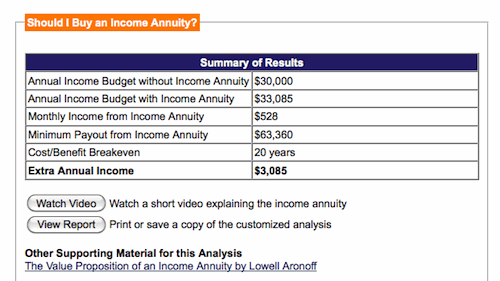
A Busload of Tools for Assessing Annuities
Cannex, distributor of real-time annuity pricing data to broker-dealers and life insurers in the U.S. and Canada, has added analytic and educational tools to its website. The tools help demonstrate that fears of getting 'hit by a bus' after buying an annuity are outdated.


